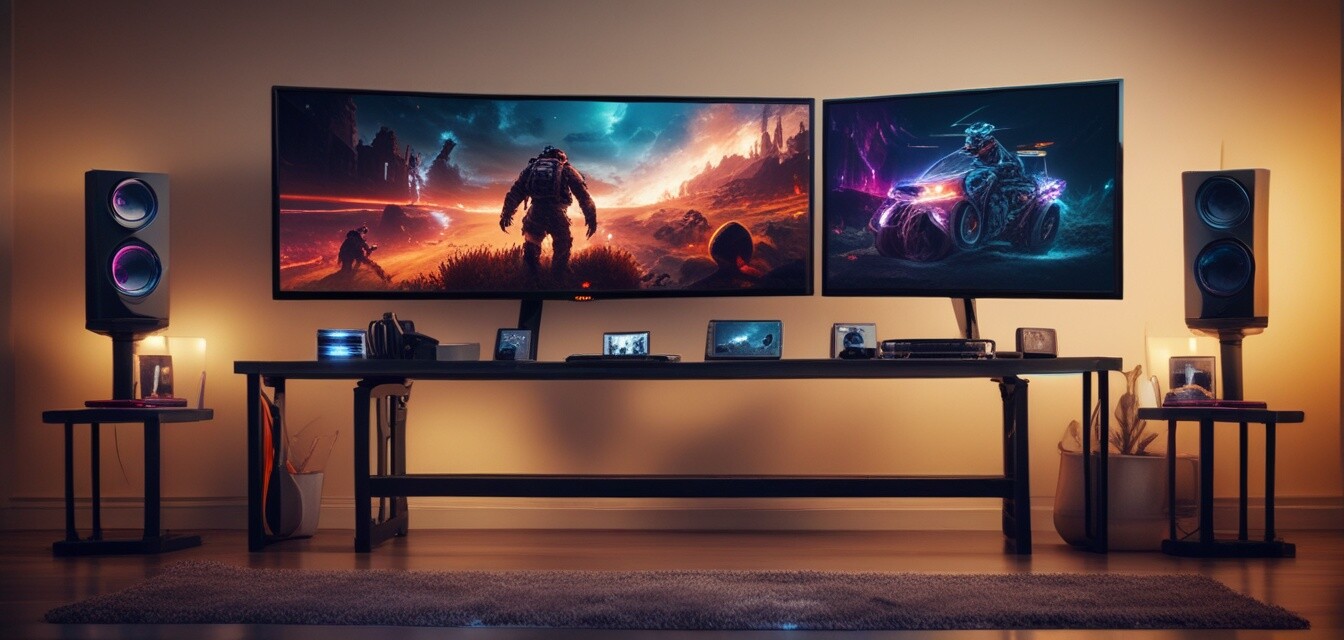
Setting Up a Multi-Screen Gaming Setup
Key Takeaways
- Multi-screen setups allow for a more immersive gaming experience.
- Choosing the right monitors is crucial for performance.
- Consider monitor mounts for saving desk space.
- A proper cable management system enhances aesthetics and usability.
- Make sure your graphics card supports multiple displays.
Creating a multi-screen gaming setup can significantly elevate your gaming experience and productivity. Whether you're a hardcore gamer or someone who multitasks between gaming and work, having multiple screens can make a world of difference. In this guide, we’ll walk you through the essentials to consider when setting up your multi-screen gaming station.
Why Choose a Multi-Screen Setup?
A multi-screen gaming setup offers numerous benefits, including:
- Enhanced immersion: With more displays, you can expand your field of vision and get a richer gaming experience.
- Increased productivity: Easily manage your game, chat, or streams on separate screens simultaneously.
- Customizable workspace: Tailor your setup to match your gaming preferences and workflow.
Key Considerations for Your Setup
1. Monitor Selection
| Feature | Importance | Recommendations |
|---|---|---|
| Resolution | High resolution delivers better detail. | Consider 4K for future-proofing. |
| Refresh Rate | Higher rates reduce motion blur. | Look for at least 144Hz for gaming. |
| Panel Type | Affects color reproduction and response time. | IPS for color, VA for contrast. |
2. Monitor Layout
Different configurations can impact your gaming experience. Here are some common layouts:
- Straight Line: Monitors are aligned in a straight row.
- C-Shaped: Curved around your seating position for immersion.
- Stacked: One monitor on top of another to save space.
3. Mounting Options
Using monitor mounts not only saves desk space but also allows customizable positioning.
- Wall mounts: Save tabletop space.
- Desk mounts: Position monitors at optimal viewing angles.
- Dual and triple monitor stands: Keep multiple screens stable and organized.
Essential Accessories for Multi-Screen Setup
Consider these accessories to enhance your gaming experience:
- Cable Management: Keep your workspace tidy with cable clips and sleeves.
- Quality Speakers: Enhance audio quality for an immersive experience.
- Webcam and Microphone: For streaming interactions with your audience.
Setting Up Your Multi-Screen Gaming Room
Follow these steps for a seamless setup:
- Choose your monitor layout based on your gaming style.
- Purchase monitors that fulfill your resolution and refresh rate requirements.
- Install monitor mounts or stands for optimal positioning.
- Connect monitors to your PC and adjust display settings.
- Manage cables and ensure easy access to all connections.
- Optimize sound setup to complement your visual experience.
Final Thoughts
Transforming your gaming experience with a multi-screen setup can be a rewarding project. Be sure to choose monitors that meet your gaming needs while considering ergonomics and aesthetics in your workspace. For more insights on gaming technology, check out our latest news in gaming technology or dive into our trends in gaming televisions. With the right setup and accessories, your gaming journey promises to be more enjoyable and productive.
Pros
- Immersive and expansive view.
- Increased multitasking capabilities.
- Customizable layouts for various needs.
Cons
- Requires a powerful graphics card.
- Higher costs compared to single-screen setups.
- May need additional desk space.
